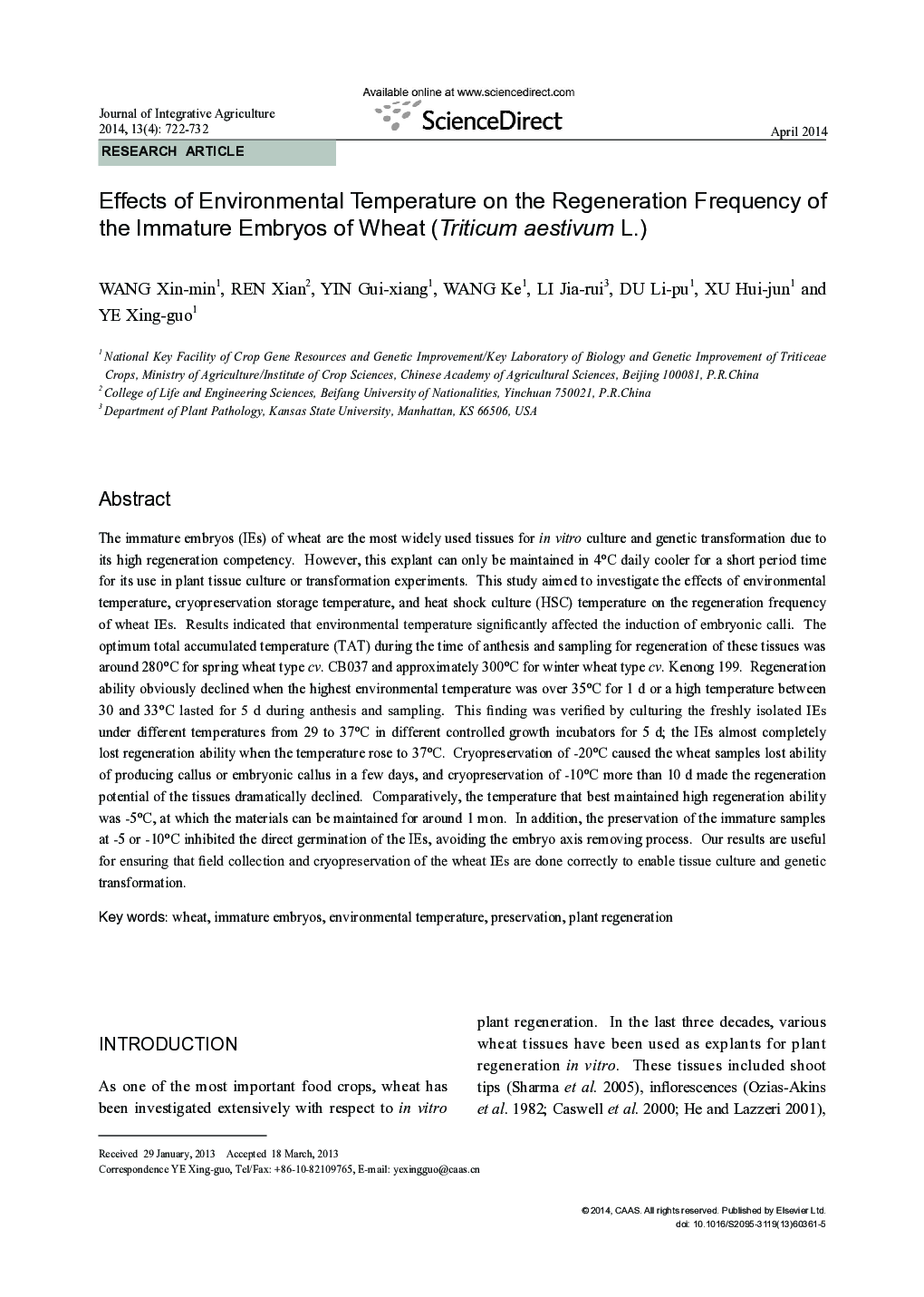| کد مقاله | کد نشریه | سال انتشار | مقاله انگلیسی | نسخه تمام متن |
|---|---|---|---|---|
| 4494597 | 1318721 | 2014 | 11 صفحه PDF | دانلود رایگان |

The immature embryos (IEs) of wheat are the most widely used tissues for in vitro culture and genetic transformation due to its high regeneration competency. However, this explant can only be maintained in 4°C daily cooler for a short period time for its use in plant tissue culture or transformation experiments. This study aimed to investigate the effects of environmental temperature, cryopreservation storage temperature, and heat shock culture (HSC) temperature on the regeneration frequency of wheat IEs. Results indicated that environmental temperature significantly affected the induction of embryonic calli. The optimum total accumulated temperature (TAT) during the time of anthesis and sampling for regeneration of these tissues was around 280°C for spring wheat type cv. CB037 and approximately 300°C for winter wheat type cv. Kenong 199. Regeneration ability obviously declined when the highest environmental temperature was over 35°C for 1 d or a high temperature between 30 and 33°C lasted for 5 d during anthesis and sampling. This finding was verified by culturing the freshly isolated IEs under different temperatures from 29 to 37°C in different controlled growth incubators for 5 d; the IEs almost completely lost regeneration ability when the temperature rose to 37°C. Cryopreservation of −20°C caused the wheat samples lost ability of producing callus or embryonic callus in a few days, and cryopreservation of −10°C more than 10 d made the regeneration potential of the tissues dramatically declined. Comparatively, the temperature that best maintained high regeneration ability was −5°C, at which the materials can be maintained for around 1 mon. In addition, the preservation of the immature samples at −5 or −10°C inhibited the direct germination of the IEs, avoiding the embryo axis removing process. Our results are useful for ensuring that field collection and cryopreservation of the wheat IEs are done correctly to enable tissue culture and genetic transformation.
Journal: Journal of Integrative Agriculture - Volume 13, Issue 4, April 2014, Pages 722-732